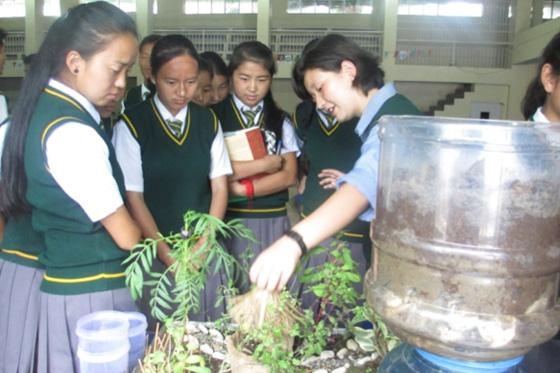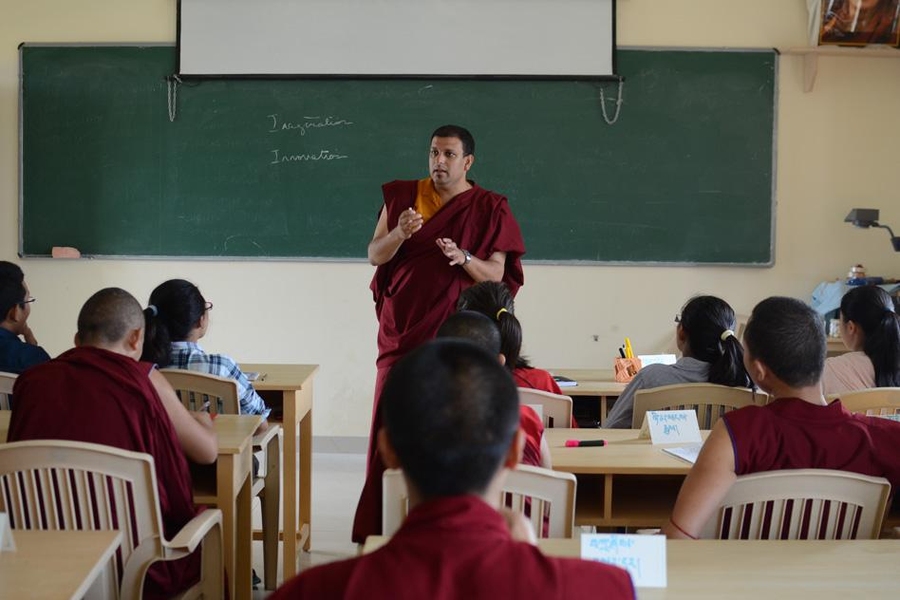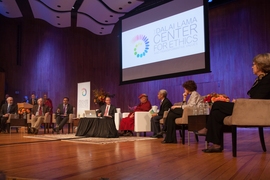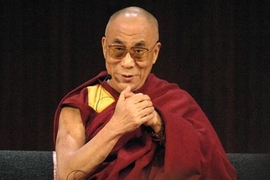To many Westerners, science, monks, and technology may not be an obvious trio. But to Tenzin Priyadarshi and others at MIT’s Dalai Lama Center for Ethics and Transformative Values, they are a means of improving the lives of Tibetans dispersed throughout India and elsewhere.
The program, called the Science, Monks and Technology Leadership Program, was launched a year ago to help members of the Tibetan diaspora find solutions to the challenges they face in some of India’s poorest regions. For example, the program has produced the first of a planned series of science centers — a simple concrete building outfitted with computers and online access — in an area where most people lack electricity or piped water. There, students and monks will be able to learn from materials such as lectures on MIT’s OpenCourseWare (with added Tibetan subtitles). The center is expected to reach full operation by this summer.
“We’ll be using that as a hub for testing out some of the models,” Priyadarshi says — efforts such as solar- or bicycle-powered electricity, and creating awareness about sustainable farming and improved water systems.
Besides encouraging the development of locally useful technologies, the program aims to improve the teaching of math and science. “Science teachers in rural India have a very basic education, and no way to continue that education,” Priyadarshi says. And often in India, he says, “Once they become teachers, they’re shy of going back to education. We’re trying to break that paradigm, and the idea has already gained traction.”
The centers will provide courses, serve as hubs “where people can try out things,” Priyadarshi says, and provide continuing education to science teachers, with each center serving 30 to 40 nearby schools, he says.
In addition, Priyadarshi says, “A lot of young monks are interested in science, but there’s … not many resources.” Since monks are highly respected, they can provide good role models and mentors in both technology and community leadership, he adds.
One resource that Priyadarshi’s team hopes to develop is a basic glossary of math terms, translated from English to Tibetan — something that he says does not currently exist. This project is now led by a team of Tibetan high school students, mentored by volunteers, and is in an advanced stage of development.
The program links MIT teachers and mentors to Tibetan community programs through Skype, supplemented by regular travel by Dalai Lama Center staff, alumni, and students — who, among other work, teach weeklong leadership classes to groups of Tibetan students and monks. Some team members will travel to India this spring to work on ongoing projects, including a rainwater-harvesting system and a bicycle-powered charging system for cellphones and lanterns.
Davide Zaccagnini, a vascular surgeon and program manager for the Science, Monks and Technology Leadership Program, says he was motivated to join because “I wanted to be involved in something beyond just my own career.” This program, he says, “is not only Buddhism, not only science, not only leadership, but the three things together. I believe that mix itself provides the highest value for all the stakeholders.”
The education is a two-way street, Zaccagnini says, with the MIT students and alumni bringing their technological knowledge, while gaining exposure to “the culture and mentality of the young Tibetans and monks, who see things a different way.”
The program emphasizes leadership and community building, Zaccagnini says, rather than a simple transfer of knowledge. The selection of projects is driven by the Tibetans, based on their sense of the challenges they face.
The hope is that some of the people who go through these leadership training programs will go on to disseminate the skills, technologies, or organizational ideas they develop, spreading their ideas and influence to the wider community. Members of the team will continue to follow projects as they unfold, and spread information about those that work well so that others can benefit from the lessons learned.
In these poor communities, Zaccagnini says, “It’s mostly a problem of powerlessness. We want to get them to realize, ‘You can do much more than you think.’”
Project aims to create science learning centers in India, while also fostering solar power and clean water.
Publication Date:
Press Contact:

Caption:
A teacher explains sustainable and organic farming to students of different Tibetan schools in Dehradun. Credits:
Photo courtesy of Dalai Lama Center

Caption:
Tenzin Priyadarshi leads a class as part of the Science, Monks and Technology Leadership Program.
Credits:
Photo courtesy of Dalai Lama Center
Related Topics
Related Articles







